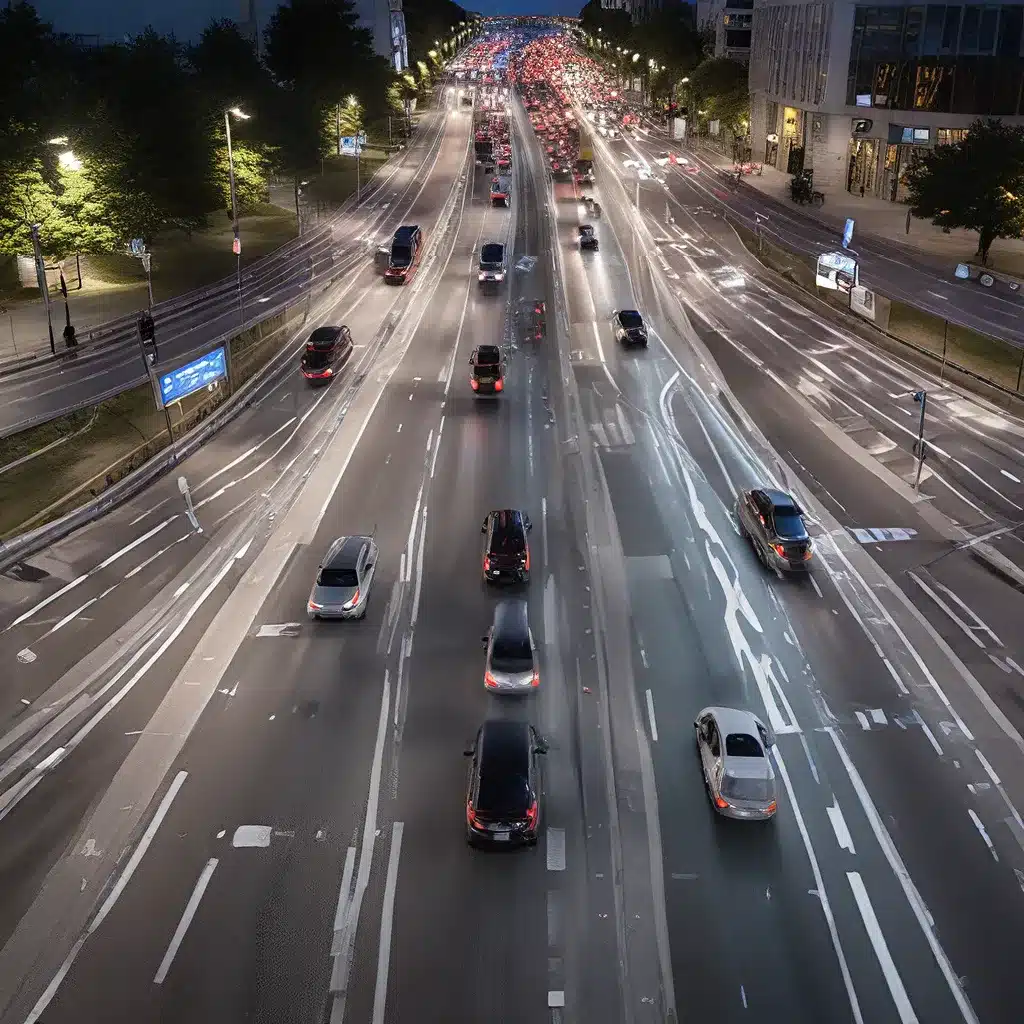
In the ever-evolving landscape of transportation and urban infrastructure, the integration of sensor networks and Internet of Things (IoT) technologies has become a crucial driver of innovation. One area where this convergence is particularly impactful is the field of intelligent transportation systems (ITS). By harnessing the power of sensor fusion – the seamless integration of data from multiple sensor sources – cities and transportation authorities can unlock a new era of optimized traffic flow and enhanced public safety.
The Rise of Sensor-Driven Intelligent Transportation
Traditional transportation management has often relied on siloed data sources, such as vehicle detectors or traffic signals. However, the emergence of advanced sensor technologies, including computer vision, RADAR, and LIDAR, has revolutionized the way we understand and manage urban mobility. These sensors, when strategically deployed and interconnected, can provide a comprehensive, real-time view of transportation patterns, enabling data-driven decision-making and proactive interventions.
Fusion Sensor, for instance, seamlessly integrates pedestrian data with other transportation data sources, such as vehicle detection and traffic signal systems, to create a holistic view of urban mobility patterns. This aggregated data facilitates better-informed decision-making and policy development for transportation planning and infrastructure investment.
Enhancing Traffic Flow and Safety through Sensor Fusion
The power of sensor fusion lies in its ability to provide a multi-dimensional understanding of transportation dynamics. By combining data from various sources, including vehicle counts, pedestrian movements, traffic signal timings, and environmental conditions, transportation authorities can gain unprecedented insights into the ebb and flow of urban traffic.
Optimizing Traffic Flow
One of the primary benefits of sensor-driven ITS is the ability to optimize traffic flow. Real-time data on vehicle and pedestrian movements, coupled with intelligent algorithms, can enable dynamic traffic signal coordination, variable speed limits, and adaptive ramp metering. These strategies can reduce congestion, minimize travel times, and improve overall traffic efficiency.
Furthermore, predictive analytics based on historical data and real-time sensor inputs can help anticipate and mitigate potential traffic bottlenecks, allowing for proactive interventions and smooth traffic flow. By leveraging this data-driven approach, transportation planners can make informed decisions about infrastructure investments, road network improvements, and traffic management strategies.
Enhancing Public Safety
In addition to optimizing traffic flow, sensor fusion technologies can also play a crucial role in enhancing public safety. Crowd density and behavior monitoring enabled by Fusion Sensor can detect potential crowd aggregation and support event management and urban planning efforts. This information can be used to anticipate and mitigate safety risks, ensuring that appropriate measures are in place to protect both pedestrians and motorists.
Moreover, the integration of vehicle-to-infrastructure (V2I) and vehicle-to-vehicle (V2V) communication technologies can further enhance safety by enabling real-time collision avoidance and emergency response coordination. Sensors can detect hazardous driving conditions, traffic incidents, or vulnerable road users, and instantly relay this information to nearby vehicles and transportation management centers, allowing for proactive safety interventions.
Addressing Challenges in Sensor Network Design and IoT Integration
While the potential of sensor-driven intelligent transportation is vast, there are several challenges that must be addressed to ensure the successful deployment and long-term sustainability of these systems.
Sensor Network Design and Deployment
Designing an effective sensor network for ITS requires careful consideration of factors such as sensor placement, network topology, and data integration. Ensuring optimal coverage, reliable connectivity, and seamless data flow between sensors and the transportation management system is crucial for accurate and timely decision-making.
Additionally, the scalability and interoperability of sensor networks are critical, as transportation systems must be able to accommodate growing urban populations and evolving technology standards. The adoption of open protocols and modular architectures can help future-proof sensor network deployments and enable seamless integration with emerging IoT solutions.
Cybersecurity and Data Privacy
As sensor-driven ITS rely heavily on the collection and exchange of sensitive data, cybersecurity and data privacy become paramount concerns. Ensuring the confidentiality, integrity, and availability of transportation data is essential to maintain public trust and safeguard critical infrastructure.
Implementing robust encryption, access controls, and anomaly detection mechanisms can help mitigate the risks of cyber threats, such as hacking, data breaches, and unauthorized access. Additionally, data privacy regulations and transparent data governance policies must be in place to protect the personal information of citizens and road users.
Energy Management and Sustainability
The widespread deployment of sensor networks for ITS can have a significant impact on energy consumption and environmental sustainability. Designing energy-efficient sensor nodes and optimizing the power management of the overall system can help reduce the carbon footprint and operational costs associated with transportation infrastructure.
Innovations in renewable energy sources, energy harvesting techniques, and advanced battery technologies can play a crucial role in enhancing the sustainability of sensor-driven ITS. By embracing these green and energy-efficient solutions, cities can not only improve transportation efficiency but also contribute to the broader sustainable development goals.
The Future of Sensor Fusion in Intelligent Transportation
As sensor networks and IoT technologies continue to evolve, the future of intelligent transportation systems holds immense promise. Advancements in artificial intelligence (AI) and machine learning (ML) can further enhance the capabilities of sensor fusion, enabling predictive analytics, autonomous decision-making, and adaptive traffic management.
Sensor-Networks.org offers a wealth of resources and insights on the latest developments in sensor network technologies and their applications in various industries, including intelligent transportation. By staying informed and adopting these innovative solutions, cities and transportation authorities can navigate the ever-changing landscape of urban mobility and deliver a safer, more efficient, and sustainable transportation experience for all.